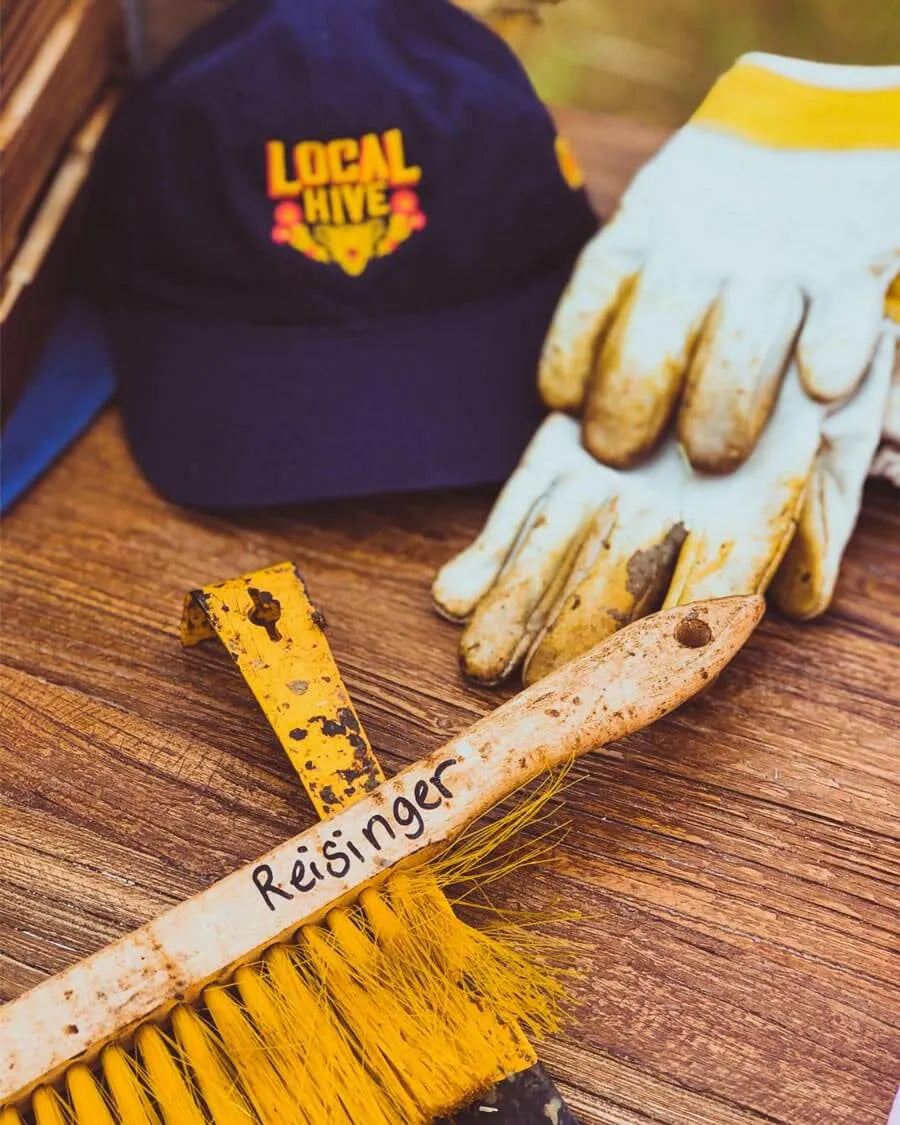Beekeeping with 2020 American Beekeeping Federation Honey Queen Mary Reisinger
Beekeeping
Mary Reisinger stays busy. Ever since her reign as 2020 American Honey Queen began, she’s had a packed schedule of travelling across the country for speaking engagements, beekeeper meetings, school visits, and – since March – virtual presentations.
In July, she met up with us to discuss beekeeping, honey and her honey extraction process.
As a representative of the American Beekeeping Federation, Mary knows how hard it is to be an American beekeeper.
“We have different issues than other countries do. By working together with the researchers and other beekeepers in the United States,

In Mary’s view, the two biggest issues are pests – like varroa mites – and nutrition. But fortunately, solving one can solve the other.
“We have to make sure that bees have the best nutrition in order to have the best defenses against these mites. A lot of times, bees don’t find enough food to eat. They need about 7–9 different kinds of pollen to have a balanced diet. A good food source, keeping them safe against pests, those are really the things we worry about as beekeepers.”
Mary will be quick to tell you just how important beekeepers are to our country: “For the livelihood of farmers, grocers, for everybody eating food, we have to focus on honey bee health in America.” But why is that?
“A lot of the fruits, vegetables and nuts that we grow here in America aren’t native. You have to bring bees that are native to those crops to pollinate them.” So, like our crops, our honey bees are imported, too: the European honey bee, apis mellifera, is the most common honey bee in the US.
And the responsibility for keeping them healthy and ready to work falls squarely on American beekeepers.
“Beekeepers are really vital, because when a farmer is growing his crop, he needs pollinators to come and pollinate. For instance, blueberries are grown in about 38 states. Each blueberry flower needs a bee to pollinate before it will produce fruit. If we didn’t truck our bees out to Maine, we wouldn’t have our great supply of blueberries.”
But as with any partnership, there’s a balance that needs to be struck. A farmer’s crops may need pollination when they’re not producing much nectar for the bees, or there may be a too-short window when bees can visit flowers, starving the hives. “
While we need professional beekeepers to pollinate crops, we also need amateur beekeepers like Mary to help pollinate wild plants, backyards and other green spaces. Mary is a huge proponent of amateurs: “90% of beekeepers are hobby beekeepers, meaning they keep 1–25 hives.” Since a single hive can pollinate up to 12 square miles, just one amateur beekeeper in an area can make a visible difference: more blooms, more flowers and more biodiversity.
Mary has been keeping bees for nearly half her life and is now up to five hives – more than enough to qualify her as a hobbyist.

“I thought about beekeeping full-time, but I don’t think I’d survive too long with all the heavy lifting.” She’s not kidding: a full hive box with ten frames can easily weigh 50 lbs. She’s currently studying speech pathology in school but plans to always keep bees as a hobby, and not just because she’s the Honey Queen: “It’s really given me a purpose in life.”
Mary lives in Parker, Texas, just north of Dallas. After our chat, Mary took us to nearby Sabine Creek Honey Farms for honey extraction. Even before it was off the comb, she offered us a chance to taste it completely raw. Distinctly flowery, with a light berry taste, her honey has a uniquely Texan flavor. It was unexpectedly sweet, even for honey.
Although it takes a lab to know for sure, she’s confident that most of the flowery taste in her particular varietal comes from crepe myrtles in the surrounding area. In 2018, the last time her honey harvest was tested, she was surprised to find that it contained 10% poison ivy pollen.
John, the proprietor of Sabine Creek Honey Farms, chimed in that bees love the ivies and underbrush in the forests on the outskirts of DFW, so finding poison ivy pollen in Texas honey is no big surprise.
“You can eat poison ivy honey because the oils are on the plant, not the nectar,” she quickly explained. Phew!
After about 4 hours of lifting frames, scraping comb and letting the extractor spin, Mary had emptied 20 frames – about two full hive boxes’ worth – for a total of around 175 pounds of her own homemade honey. Not bad for an amateur.

